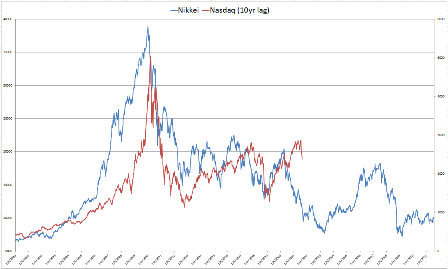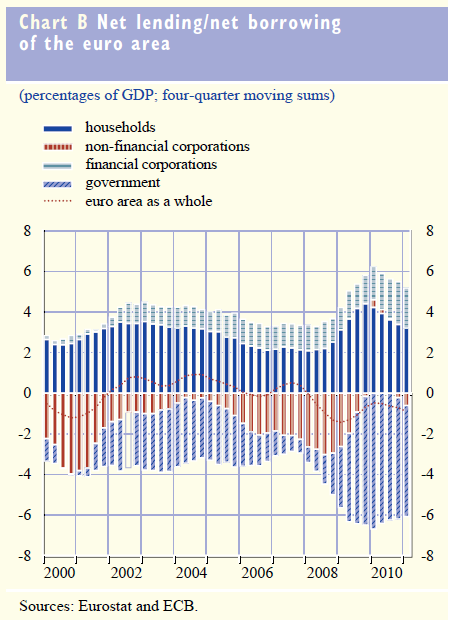By Paul Krugman
August 11 (NYT) — Regular readers of comments will notice a continual stream of criticism from MMT (modern monetary theory) types, who insist that deficits are never a problem as long as you have your own currency.
Right, ability to pay is not an issue.
I really don’t want to get into that fight right now, because for the time being the MMT people and yours truly are on the same side of the policy debate. Right now it really doesn’t matter at all whether the United States issues zero-interest short-term debt or simply prints zero-interest dollar bills, and concern about crowding out is just bad economics.
Right.
But we won’t always be in a liquidity trap.
We don’t have one now. It’s a fixed fx concept at best.
But we won’t always be in a liquidity trap.
Someday private demand will be high enough that the Fed will have good reason to raise interest rates above zero, to limit inflation.
Yes, because they ignore the interest income channels.
And when that happens, deficits — and the perceived willingness of the government to raise enough revenue to cover its spending — will matter.
Yes, deficit spending adds to aggregate demand and nominal savings to the penny. Add too much and you get ‘demand pull inflation’
With fixed fx, that can drive up interest rates and threaten reserves. With floating fx it only causes the currency to fluctuate.
I have a specific example that illustrates my point: France in the 1920s, which I wrote about in my dissertation lo these many years ago. Like many nations, France came out of World War I with very large debts, peaking at 240 percent of GDP according to this recent IMF presentation (pdf, slide 17). And France was unable politically to raise enough taxes to cover the cost of servicing that debt. And investors lost confidence in the government’s solvency.
If it was a floating fx policy, interest rates would have been wherever the bank of france set them. If it was a fixed fx policy, rates would be market determined, as the tsy had to compete with the option to convert at the CB.
And taxes falling short of spending is the norm in most nations. Japan for example has one of the largest debts and deficits and one of the strongest currencies. So there’s more to it.
Various expedients were tried, including — late in the game — creation of monetary base, which was advocated by a finance minister on the (very MMT) grounds that the division of government liabilities between currency and short-term bills made no difference. But it turned out that it did: the franc plunged, and the price level soared.
He still hasn’t indicated whether it was a fixed or floating fx policy, and I don’t recall, so I can’t comment.
Now as it turned out this was just what the doctor ordered: because France’s budget problem was overwhelmingly the debt overhang rather than current spending, inflation eroded the real value of that debt and made possible the Poincare stabilization of 1926.
Yes, if a nation goes to a fixed fx policy at the’wrong’ price a further adjustment can address that, though it still doesn’t address the fundamental difficulties of living with a fixed fx policy.
So what does this say about the United States? At a future date, when we’re out of the liquidity trap,
that we aren’t in
public finances will matter — and not just because of their role in raising or reducing aggregate demand. The composition of public liabilities as between debt and monetary base does matter in normal times —
Yes, it determines the term structure of risk free rates.
hey, if it didn’t, the Fed would have no influence, ever.
True, and it doesn’t have much in any case, apart from shifting income between savers and borrowers and altering the interest income of the economy, which is a net saver to the tune of the govt debt, to the penny.
So if we try at that point to finance the deficit by money issue rather than bond sales, it will be inflationary.
Only under a fixed exchange rate policy, which we don’t have.
And unlike France in the 1920s, such a hypothetical US deficit crisis wouldn’t be self-correcting: the biggest source of our long-run deficit isn’t the overhang of debt, it’s the prospective current cost of paying for retirement, health care, and defense. So such a crisis — again, it’s very much hypothetical — could spiral into something very nasty, with very high inflation and, yes, hyperinflation.
Highly unlikely. It would probably take annual deficit of well over 20% to get that kind of inflation from excess demand.
Now, all of this is remote right now. And notice too that France in the 1920s stabilized with debt of 140 percent of GDP — far higher than the numbers that are supposed to terrify us now. So none of this is relevant to the current policy debate.
But since the MMTers seem to have decided to harass those of us who want stronger action now but think there really is a long-run fiscal issue, I needed to put this out there.
MMT explains the difference between fixed and floating fx policy.


